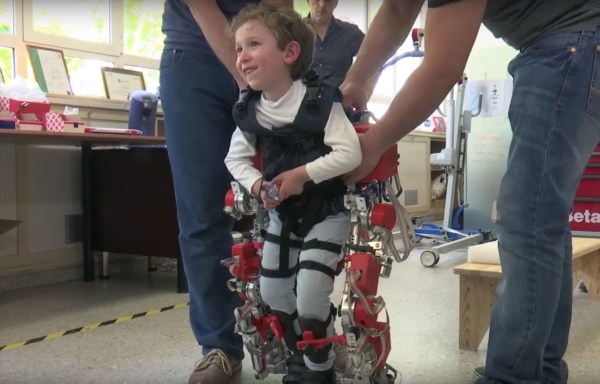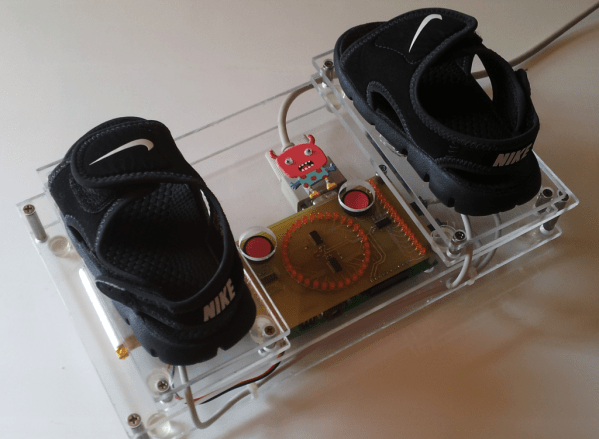[Shea’s] son [Alejandro] was born with Spinal Muscular Atrophy which limits his ability to move. The ability to explore one’s environment as a toddler is really important to development so [Shea] and his wife have been looking into assistive technology. Their health insurance paid for a medical stroller when he was nine-months old and has told the family they need to wait five years for a powered wheelchair. Rather than wait, [Shea] took it upon himself to hack a wheelchair his son could control.
He found a used adult-sized motorized wheelchair on eBay for about $800. Not cheap, but way more affordable than a brand new unit. This type of chair is made to be controlled with a joystick, an option not available to his son at this point. Foot control was an option if he could figure out how to build an interface.
After unsuccessfully trying to repair a broken digital kitchen scale [Shea] was inspired to reuse the sensors as pedal inputs. [Alejandro] has limited foot strength and the sensitive strain gauges are perfect for picking it up. Above you can see the sandal-based interface he built. The two feet working together affect steering as well as forward and reverse. The pedal system is connected to the wheelchair using a Digital to Analog converter chip to stand-in for the original analog joystick. After the break we’ve embedded a video of [Alejandro] exploring the outdoors in the finished chair.
In this case it’s fortunate that [Shea] has the skills to build something like this for his son. We hope this will inspire you to donate your time an know-how to help those in your own community who are in a similar situation. This really takes the concept of The Controller Project to the next level.
Continue reading “Wheelchair Hack Lets Two-year-old Explore On His Own” →












